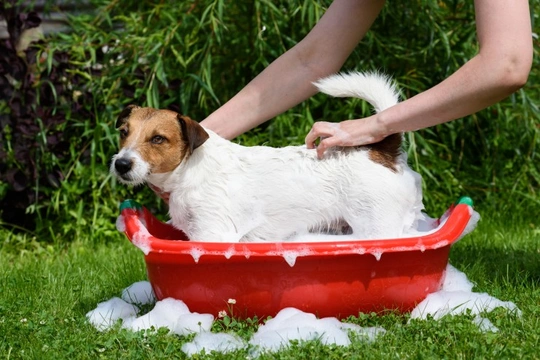
Minimising Bath Time Stress: Calm Tips for Dogs That Hate Water
Many dog breeds instinctively love water, swimming, and playing whenever they get the chance. However, some dogs display a near-phobic dislike for getting wet, making bath times a distressing experience for them and their owners. If your dog struggles or resists bathing, it increases stress levels for everyone involved, which can worsen the dog's aversion to the process.
Dogs can hate water for various reasons including past negative experiences, discomfort from the sensation of water on their skin, or feeling insecure and out of control. Even water-loving dogs might dislike baths if forced. Understanding these factors allows you to approach the situation with empathy and kindness.
Our guide shares practical, step-by-step advice to help you minimise your dog's bath time stress, turning a difficult experience into a calmer one for both of you.
Create a Calm Environment
Dogs are highly perceptive to their owner’s mood. If you feel anxious or frustrated about bath time, your dog will pick up on it immediately. Prepare everything you'll need beforehand and remain calm and composed throughout. A serene setting reduces stress and sets a positive tone for the bath.
Encourage Voluntary Participation
Instead of wrestling your dog into the tub, try gentle commands or enticing treats to encourage them to step into the bath willingly. Forcing your dog can increase fear and resistance. Patience and positive reinforcement can make a big difference.
Balance Sympathy and Reassurance
It’s natural to want to comfort your nervous dog, but excessive coaxing can unintentionally reinforce their fears. Keep your approach confident yet gentle. Maintain a business-like demeanour, showing your dog that bath time is routine and safe, not a cause for alarm.
Use a Shallow Tub with a Non-slip Mat
Physical insecurity often triggers bath anxiety. Use a shallow basin or bathtub lined with a non-slip mat to give your dog firm footing. Ensure the water level is no higher than the bottom of your dog’s belly to avoid feeling overwhelmed. This simple step can improve their confidence dramatically.
Ensure Comfortable Water Temperature
Water that is too hot or too cold can be uncomfortable and increase stress. Aim for lukewarm water, similar to room temperature. Take your time to check the temperature before the bath and adjust accordingly to keep your dog comfortable.
Handle the Face with Extra Care
The face is a sensitive area; shampoo or water in the eyes, nose, or ears can feel distressing. Use a gentle, no-tears shampoo specially formulated for dogs, and clean the face carefully with a damp cloth rather than pouring water. Avoid water running over the head to prevent causing panic or discomfort.
Secure Your Dog Safely But Comfortably
Restricting your dog’s movement helps keep them safe and makes washing easier. However, do not restrain too tightly as this can cause distress. If possible, have a helper hold your dog gently but firmly while you wash. Ensure your dog cannot slip or escape, but remains as relaxed as possible.
Get Support from a Trusted Helper
Having a second person involved can greatly ease bath time. One person can focus on washing while the other manages and soothes the dog. The helper should ideally be familiar to your dog to avoid adding stress.
Make Bath Time Fun
Introduce positive distractions like chew toys or bath toys to shift your dog’s focus. Providing play and rewards during the bath helps create enjoyable associations, which can reduce fear and build acceptance over time.
Use Treats and Praise Throughout
Use plenty of treats, praise, and gentle encouragement consistently throughout the bath to reinforce calm behaviour. Over time, your dog will learn to associate bath time with positive rewards rather than fear.
Conclusion
Bathing a dog that hates water challenges both pet and owner, but with patience, preparation, and positive methods, you can transform bath times into calmer, less stressful experiences. Focus on creating security, using gentle encouragement, and rewarding your dog’s cooperation. By implementing these steps, bath time can become a manageable and even pleasant routine that supports your dog’s wellbeing and your bond.
For those looking to find a new dog or a specific breed known for water-friendly nature, it’s always best to find puppies from reputable breeders who prioritise ethical practices and health.



